For Cruising Sailors, the Joys and Challenges of Long-Term Sailing Voyages
For many years, sailing small engine-less sailboats was enough for me. But when the fall Annapolis Sailboat Show became an annual obsession, my dreams turned to larger sailboats that would allow me to explore the Chesapeake Bay and beyond for longer durations. That’s when the cruising idea grabbed hold and wouldn’t let go.
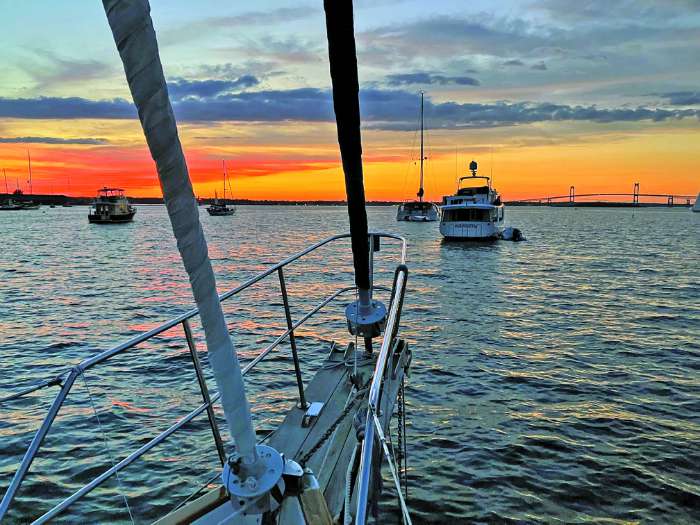
Fast forward a decade, during which I met my husband and other friends who dreamed of cruising. We were all learning that long-term cruising meant different things to different people. By taking classes, reading, and talking with like-minded sailors, we learned more about the cruising lifestyle. But all the research and networking in the world doesn’t take the place of throwing off the lines to experience it firsthand.
In recent years, my husband and I embarked on two long-term voyages aboard our 44-foot sailboat, becoming intimate with the highs and lows of cruising. In addition, I’ve crewed with several friends on passages aboard their floating homes. These varied experiences highlighted both the joys and challenges of long-term cruising.
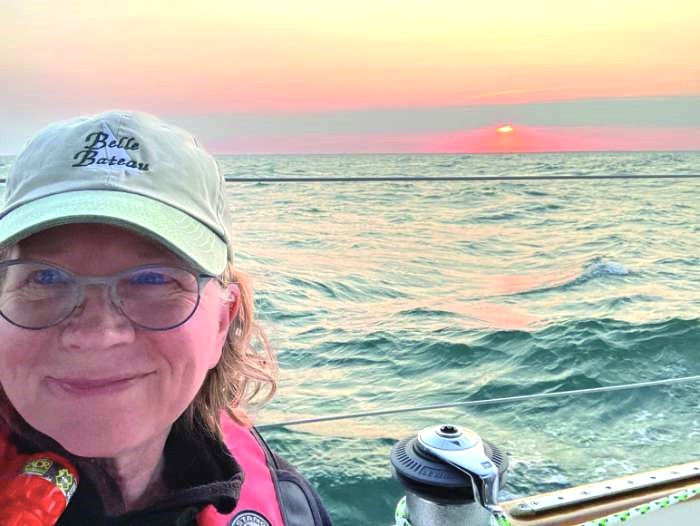
When your boat is your only home
We nicknamed our first long cruise “sailbatical” since we paused our careers for seven months to cruise to Florida and back, totaling 2000 miles. Before we left, I sold the house where I raised my family, stored some possessions, and moved onto our boat for one year, two-thirds of which was spent long-term cruising.
Not having a land-based home does change the cruising experience. On one hand, it forces you to embrace the cruising life, since your boat becomes your only home rather than a second home. For some, this is pure joy, while for others it can cause anxiety.
For example, I had hoped we’d live on the boat longer, but my other half wanted a land-based home with more room, less weather anxiety, and less never-ending maintenance. While I was initially disappointed, I did understand. Living aboard is challenging!
But had I known we’d only live on the boat for a year, I might have rented out my house, as friends Annette and Anthony Baker did, before diving headlong into cruising. They tested the waters first, eventually selling their condo to live aboard their 44-foot Morgan Magnolia. During their 10 years of coastal cruising from Annapolis to the Bahamas to Maine and later inland to Detroit on their trawler, they embraced the cruising life. They even scouted coastal towns for settling down after they had their fill of water-based living. What a beautiful way to explore possibilities!
Twice I’ve recently joined my friend Julie Roberts aboard her 45-foot catamaran At Ease, her only home for over two years. When I first joined Julie, she was a year into her new life, learning her boat and exploring the East Coast, including a short ocean crossing to the Bahamas. Now she is quite experienced with several overnight passages on the way to Grenada and back to the Virgin Islands, island hopping across the Caribbean either solo or with crew. I’ve heard many stories and have observed firsthand some low and high points.
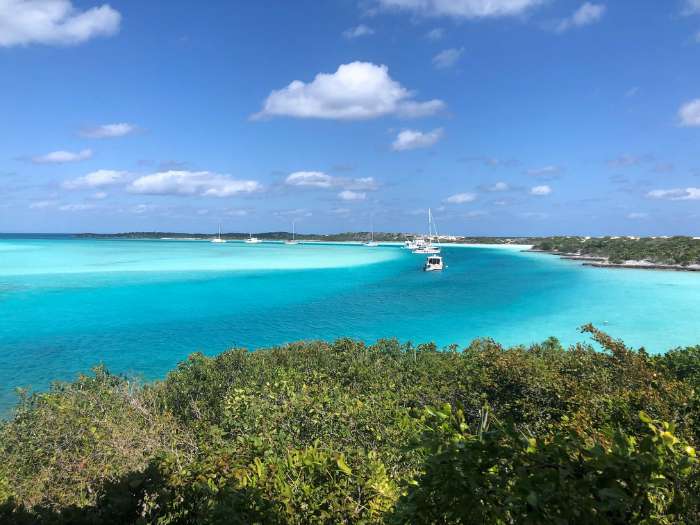
Based on these experiences, when planning to cruise full-time consider:
Joys
- Traveling to new places without packing and unpacking.
- Time to sail longer distances.
- Sense of self-reliance and accomplishment.
- Feeling fulfilled mentally, physically, and emotionally.
- Less or no boat winterization.
- Touring places that few visit.
- Being part of a liveaboard community, always willing to help each other.
- Opportunities to include friends and family.
- Knowing your own boat (vs. a charter boat).
- Total commitment to the cruising lifestyle.
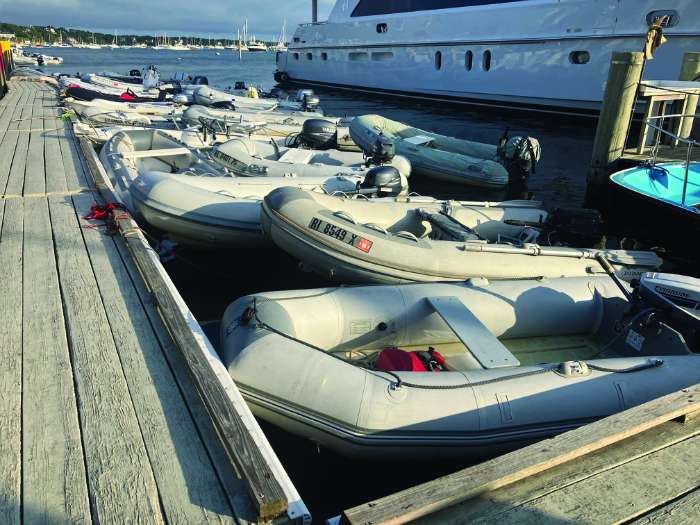
A crowded dock of sailing dinghies is commonplace while cruising long term.
Challenges - Decision fatigue, from simple to complex.
- Constant weather monitoring.
- Checking in/out of countries.
- Persistent replenishing of depleted resources: food, water, fuel, and energy.
- Difficulty of everyday tasks (laundry, groceries).
- Relentless wear and tear on the boat (home).
- Scheduling maintenance and obtaining parts in remote areas.
- Safety and security.
- Overnight passages and watch schedules.
- Funds tied up in a depreciating asset.
- Seasonal cruising is another option
My second long-term cruise occurred last year when we ventured from Annapolis to Maine and back, totaling 1800 miles. Unlike our sailbatical, we had retired from our careers, so we had fewer time pressures. By then, we were seasoned Chesapeake cruisers and felt more prepared than seven years prior.
Although we decided to return to Maryland at the summer’s end, we did consider winter storage of our boat in New England to have more time to explore northern latitudes next season. One cruising friend, a schoolteacher for nine months of the year, did just that for two decades, moving her Ted Brewer 42-foot, steel pilothouse cutter Nomad farther north each summer. Upon retirement, Priscilla Travis eventually sailed from Newfoundland to Scotland where she based Nomad and cruised fourteen summers in Europe before shipping her boat back to the United States.
Cruising friends Burt and Prue Preston recently became seasonal cruisers after eight years of full-time sailing along the East Coast and to the Bahamas on their Hylas 44 Exuberant. They now leave their boat in the Chesapeake, cruising to Maine and back from May to September. They spend the remainder of the year in their new South Carolina home. They feel they enjoy the best of both worlds.
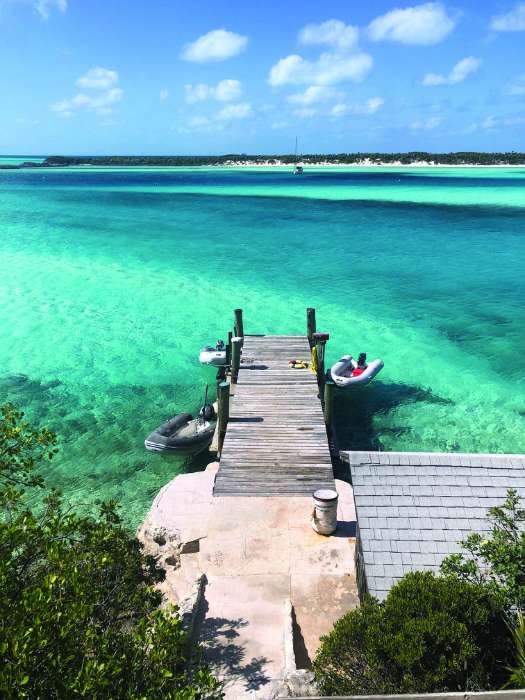
In addition to the above lists of joys and challenges, these seasonal cruisers would add:
More joys
- Being one with nature and wildlife.
- Endless sunrises and sunsets.
- Peaceful anchorages.
- Quieter, slower pace.
- Mishaps and weather delays that lead to friendships.
- Self-sufficiency and living off the grid.
- Arriving to towns from water rather than land.
- Best of both worlds: land and sea.
More challenges
- Fixing three or more things a day.
- Time consumed by passage planning.
- Managing scarce resources: water, power, food, holding tank, fuel, space, and money.
- Avoiding sailing to a schedule.
- Timing tides, locks, and bridge openings, especially on the ICW.
- Finding protected places to anchor or moor.
- Managing crowded dinghy docks.
- Confidence in ground tackle (nothing good ever happens at 3 a.m.).
Before you commit to long-term cruising
The Chesapeake region provides an excellent place to test temperaments and aspirations for long-term cruising. Some sailors commit to completing the DelMarVa loop before venturing farther, circumnavigating the three-state peninsula bordered by the Chesapeake and Delaware Bays and the ocean. Others decide that long-term cruising on our two bays is challenging enough, sailing south to Norfolk, or north to Philadelphia or Cape May. Still, others prefer to charter boats in the Caribbean and beyond to experience some of the joys and challenges of island life before fully committing.
Whatever you decide, enjoy the process, be patient, and know that long-term cruising has its highs and lows, similar to living on land. For me, life on a boat is always an adventure and mostly an enjoyable one. Is it worth it? Yes! ~By Captain Cheryl Duvall
This is the second in our three-part offshore series 2024. Find the first installment here.




